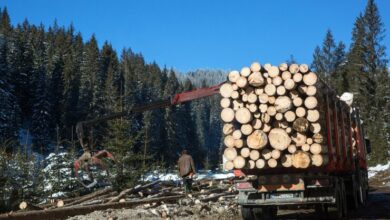Smart Farming Strategies for Sustainable Crop Yields in Pakistan
Introduction
Agriculture remains the backbone of Pakistan’s economy, employing over 38% of the labor force and contributing nearly 20% to the national GDP. Yet, despite its critical role, farmers continue to face challenges such as soil degradation, declining yields, erratic weather patterns, and a lack of modern tools. As the global demand for food grows and climate change disrupts traditional farming cycles, sustainable agriculture is no longer optional—it’s essential.
To ensure long-term productivity, Pakistani farmers must embrace smarter, science-backed strategies that enhance soil health, optimize input use, and minimize waste. This article explores the most effective sustainable farming techniques tailored for Pakistan’s agro-climatic conditions, highlighting how informed choices and timely interventions can transform harvest outcomes.
H2: The Need for Sustainable Agriculture in Pakistan
Pakistan’s agricultural sector is under pressure from several environmental and economic stressors. Land overuse, excessive chemical input, and monoculture cropping have degraded soil quality over the years. Meanwhile, climate change has brought irregular rainfall, extreme heatwaves, and new pest infestations, all of which threaten food security.
The conventional “more is better” approach to fertilizers and pesticides is proving counterproductive. Overapplication not only damages the environment but also increases costs without a proportional gain in yield. Sustainable farming—where resources are managed efficiently for long-term use—is the only viable solution moving forward.
Key Components of Smart and Sustainable Farming
Modern sustainable agriculture focuses on efficiency, precision, and ecosystem balance. Here are some of the cornerstone strategies being implemented successfully across Pakistan and globally.
Crop Rotation and Diversification
Relying on a single crop season after season depletes specific nutrients from the soil, leading to poorer yields over time. Crop rotation—alternating between legumes, cereals, and vegetables—helps restore soil fertility, reduce pest buildup, and increase biodiversity. For example, rotating wheat with legumes like lentils or mung beans improves nitrogen levels in the soil naturally.
Diversifying crops also helps farmers spread risk. If one crop fails due to market prices or pests, another may thrive and balance out the financial impact.
Integrated Pest Management (IPM)
Chemical pesticides may offer short-term relief but often come with long-term ecological costs. Integrated Pest Management combines biological controls, mechanical tools, and minimal chemical usage to keep pests in check. Techniques such as introducing natural predators (like ladybugs for aphids), using pheromone traps, or implementing timely crop sanitation reduce the need for broad-spectrum pesticides.
In Pakistan, universities and agricultural extension programs are now training farmers in IPM methods to combat resistance-building pests like whiteflies and armyworms more sustainably.
Efficient Water Management
Water scarcity is a growing threat in Pakistan, particularly in arid zones of Balochistan and southern Punjab. Traditional flood irrigation wastes up to 60% of water. Drip and sprinkler irrigation, although requiring initial investment, save significant volumes of water and direct it precisely to plant roots.
Laser land leveling is another water-saving practice gaining traction. By creating uniform fields, it improves irrigation efficiency, reduces runoff, and boosts crop productivity.
The Role of Technology in Modern Agriculture
Advances in digital agriculture and precision farming are making it easier for Pakistani farmers to optimize resource use. Satellite imaging, drones, and mobile apps provide real-time data on weather patterns, crop health, and soil moisture levels. With this data, farmers can make informed decisions about when to irrigate, fertilize, or harvest.
Farm management software also enables better record-keeping, planning, and marketing, helping farmers increase profits and reduce losses. As smartphones become more widespread, even small-scale farmers can benefit from these innovations.
Empowering Farmers Through Education and Access
One of the main hurdles in adopting sustainable practices is a lack of awareness and access to reliable information. Many smallholder farmers still rely on traditional knowledge or advice from local dealers, which may not be updated with the latest agricultural research.
Government initiatives and NGOs are now working to bridge this gap. Field training programs, digital learning modules, and community demonstration plots are being used to educate farmers about sustainable practices, pest identification, and input optimization.
Involving local farmer associations and cooperatives in these efforts is crucial for building trust and ensuring the long-term success of sustainability initiatives.
Making Informed Input Choices for Long-Term Benefits
Farmers often struggle with selecting the right fertilizers and inputs due to market fluctuations and inconsistent product availability. Making informed input choices not only boosts yield but also reduces unnecessary expenses.
One practical strategy involves conducting regular soil assessments. With the help of modern soil testing services, farmers can accurately identify nutrient deficiencies, pH imbalances, and salinity issues in their fields. Based on the results, they can apply the correct type and amount of fertilizer instead of relying on guesswork.
This targeted approach becomes even more critical when considering the fertilizer price in Pakistan, which has seen significant volatility due to economic conditions, currency devaluation, and global supply disruptions. By applying only what the soil truly needs, farmers can make their investment count—maximizing yield while minimizing waste and environmental harm.
Farmers in districts like Okara and Faisalabad who have adopted this approach report better harvests and lower input costs, all while preserving long-term soil health.
Organic Farming and Natural Inputs
While still a niche in Pakistan, organic farming is gaining momentum. It focuses on using natural composts, biofertilizers, and biological pest controls. Organic inputs not only restore soil vitality but also produce healthier, chemical-free food.
Some forward-looking farmers are exploring vermicomposting (using earthworms to produce high-quality compost), neem oil sprays for pest deterrence, and green manures to naturally enrich soil nutrients.
Although organic farming may initially yield less than conventional methods, its benefits compound over time—reducing input costs and improving soil resilience.
H2: Government Support and Policy Reforms
To accelerate the transition toward sustainable farming, stronger policy support is required. Government subsidies for high-efficiency irrigation systems, solar-powered equipment, and soil testing services can ease the financial burden on farmers.
Moreover, regulating fertilizer and pesticide quality, along with price monitoring, can protect farmers from counterfeit or overpriced products. Support for research institutions and collaboration with international agri-science bodies will further enrich the local agricultural knowledge base.
Programs like Punjab’s Agriculture Extension 2.0, which integrates mobile tech with field visits, and Khyber Pakhtunkhwa’s smart irrigation pilot projects, are commendable steps toward more sustainable agriculture.
Challenges in Adopting Sustainable Practices
Despite the benefits, several barriers hinder widespread adoption of sustainable farming in Pakistan:
- High Initial Costs: Drip irrigation, solar panels, and testing services require upfront investment.
- Lack of Infrastructure: In remote areas, access to labs, advisory services, and modern tools is limited.
- Cultural Resistance: Farmers who have used the same methods for generations may hesitate to change.
- Policy Inconsistencies: Shifting subsidies or import duties on agri-inputs create uncertainty.
To overcome these challenges, collaboration between public institutions, private sector innovators, and farmer networks is essential. Shared investment models, micro-loans, and demonstration plots can all encourage adoption.
Case Study – A Success Story from Southern Punjab
Rashid Mehmood, a farmer from Bahawalpur, transitioned to sustainable farming on his 25-acre wheat and cotton farm over three years. By utilizing soil testing to fine-tune his fertilizer application, switching to laser leveling, and adopting IPM methods, Rashid reduced his input costs by 30% and increased yield by 18%.
With assistance from a local NGO and mobile-based agronomy support, he now mentors neighboring farmers and is exploring organic cotton certification to access premium markets. His success underscores the transformative power of knowledge, community, and sustainable techniques.
Conclusion
The path to sustainable agriculture in Pakistan is not without obstacles, but it is increasingly becoming a necessity rather than a choice. With fertile land, hardworking farmers, and growing technological access, Pakistan has the potential to lead the region in smart farming practices.
By embracing innovations such as soil testing services, making calculated input decisions amidst rising fertilizer prices in Pakistan, and adopting environmentally sound techniques, farmers can secure not only their livelihoods but the future of agriculture itself. The next generation of farming will be defined not just by how much we grow—but by how wisely we do it.

